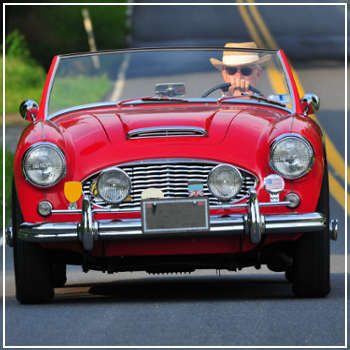What’s the Difference Between Classic, Vintage & Antique Cars?
 For any car enthusiast, restoring an older vehicle is often seen as a dream come true. However, when we talk about "older," it's essential to distinguish between different categories like antique, classic, and vintage cars. These classifications aren't set in stone, and each comes with its own unique set of criteria.
For any car enthusiast, restoring an older vehicle is often seen as a dream come true. However, when we talk about "older," it's essential to distinguish between different categories like antique, classic, and vintage cars. These classifications aren't set in stone, and each comes with its own unique set of criteria.
The General Guidelines
While there's no universal agreement between states and organizations, here are the common guidelines:
- Classic: Typically defined as vehicles at least 20 years old.
- Antique: Cars that are at least 45 years old.
- Vintage: Vehicles manufactured between 1919 and 1930.
However, factors like the restoration quality, parts used, and the definitions provided by insurance carriers and DMVs can add layers of complexity to these categories.
State DMV
In many states, a car is considered historical if it was manufactured after 1922 and is at least 25 years old. Additionally, any car made before 1965 with a 16-cylinder or larger engine is labeled a Horseless Carriage. For either distinction, the vehicle must remain unmodified and cannot be a replica. Furthermore, cars over 45 years old may require special license plates and should retain their original design as closely as possible.
Remember that rules vary by state. Before purchasing or restoring a vehicle, ensure you're familiar with local regulations and obtain proper insurance through a classic car policy rather than a standard personal policy.
Insurance
Most standard auto carriers classify cars from 1900 to 1979 as either antique or classic, while those made in 1980 or later are categorized as collector cars unless they're modern vehicles. Both classic and antique policies offer distinct benefits but come with restrictions. Your carrier might limit:
- Where and when you can drive your car.
- The number of miles you can put on it annually.
- Whether you can participate in car shows.
Organizations
On the other hand, the Classic Car Club of America has stricter criteria for what qualifies as a classic car:
- Manufactured between 1915 and 1948.
- Must meet high standards in design, engineering, and craftsmanship.
- Should be fully restored and operational.
- No modern modifications, such as power brakes, are allowed.
Similarly, the Antique Car Club has comparable standards regarding features and restoration, though their date range is broader, covering any vehicle 25 years or older.
What’s Vintage?
Vintage cars often overlap with antique cars but differ in a few key areas:
- Vintage cars are typically built between 1919 and 1930.
- They aren't disqualified if they’ve undergone modifications or alterations to their original design.
- Custom cars, hot rods, and exotic vehicles usually fit into this category but don't meet the criteria for being considered antique or classic cars.
Are you currently restoring an older vehicle and need assistance? Reach out to DaSilva’s Auto Body for help. Whether you're working on a classic, antique, or vintage car, our team can provide expert guidance and support. Give us a call today to learn more about how we can help bring your project to life!
Protective Film For Metals,Transparent Pe Protective Film,Adhesive Protective Film,Steel Pe Protective Film
Wuxi Xinhao Protective Film CO.,Ltd , https://www.cotton-balewrap.com